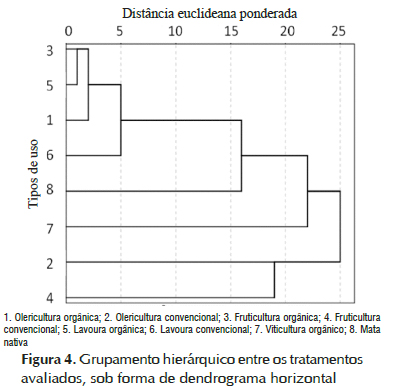Lower northeast hillside region, in Rio Grande do Sul state, Brazil, shows, in agricultural activities, variability in soil use and production systems, which can result in change of soil attributes and degradation processes. With the aim to evaluate particle size distribution and chemical attributes and to compare them in different soil use and management system, soil samples from 78 areas, performing eight diverse types of soil use in conventional and organic production systems, were sampled for the study, between 2009 and 2010. Soil samples were collected at 0 to 20 cm depth, and a series of attributes were determined. Results showed pH, electrical conductivity, zinc and phosphorus contents with higher values in areas of conventional vegetable production, while sulphur showed higher values in soil under grape cultivation. Discriminate analysis indicated that 67% of the areas were classified in the same use defined at the time of sampling (original use), and principal component analysis showed more similar behavior among uses in organic system, besides conventional crop. Some elements showed very high contents, indicating potential contamination and environmental risk.
production systems; agroecological production; soil use and management







